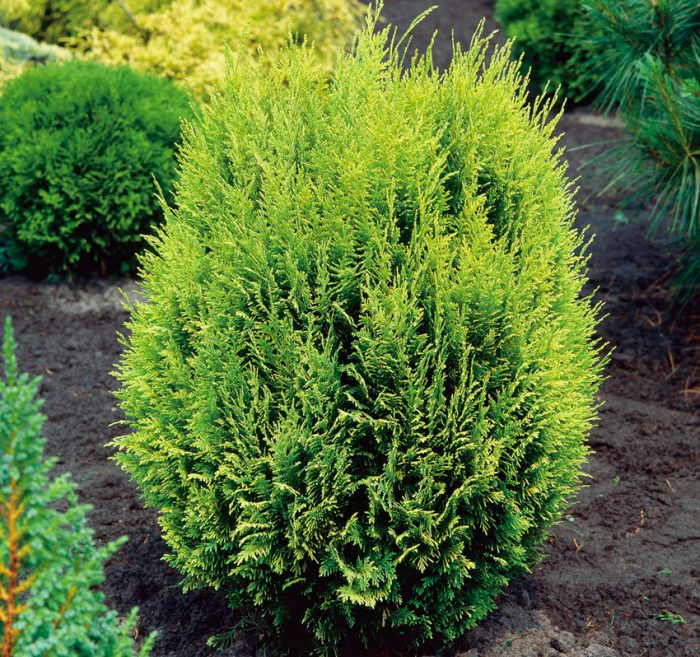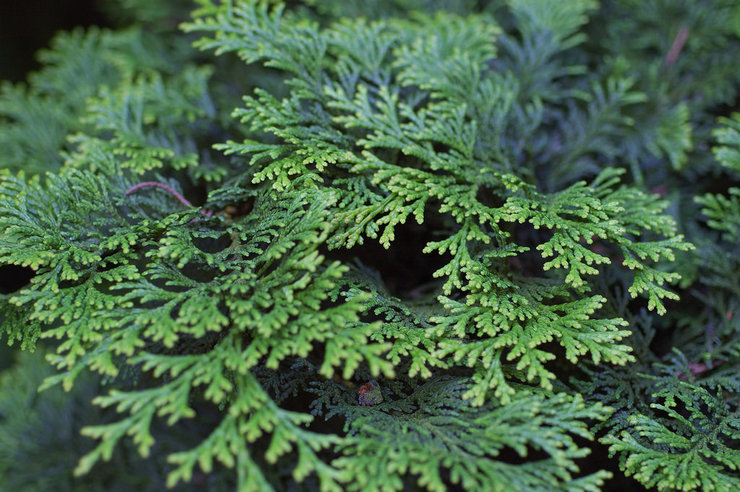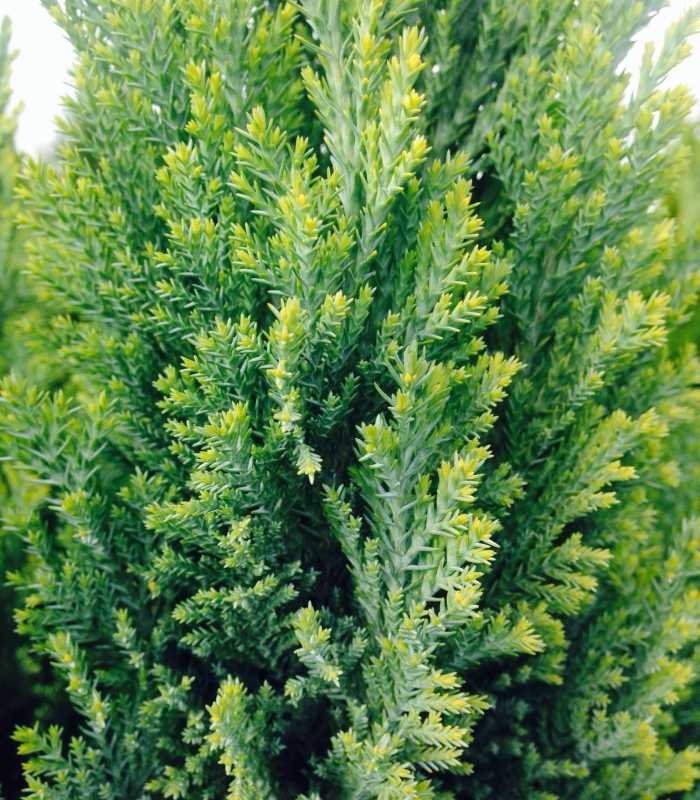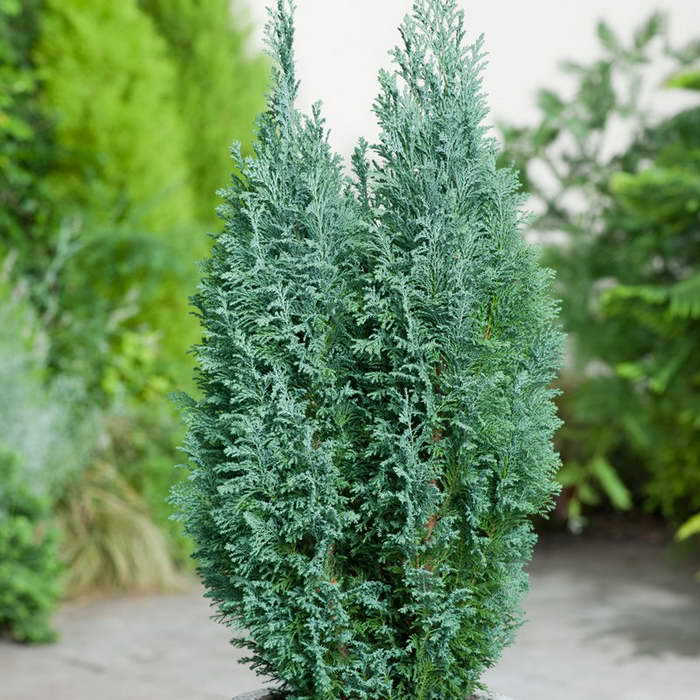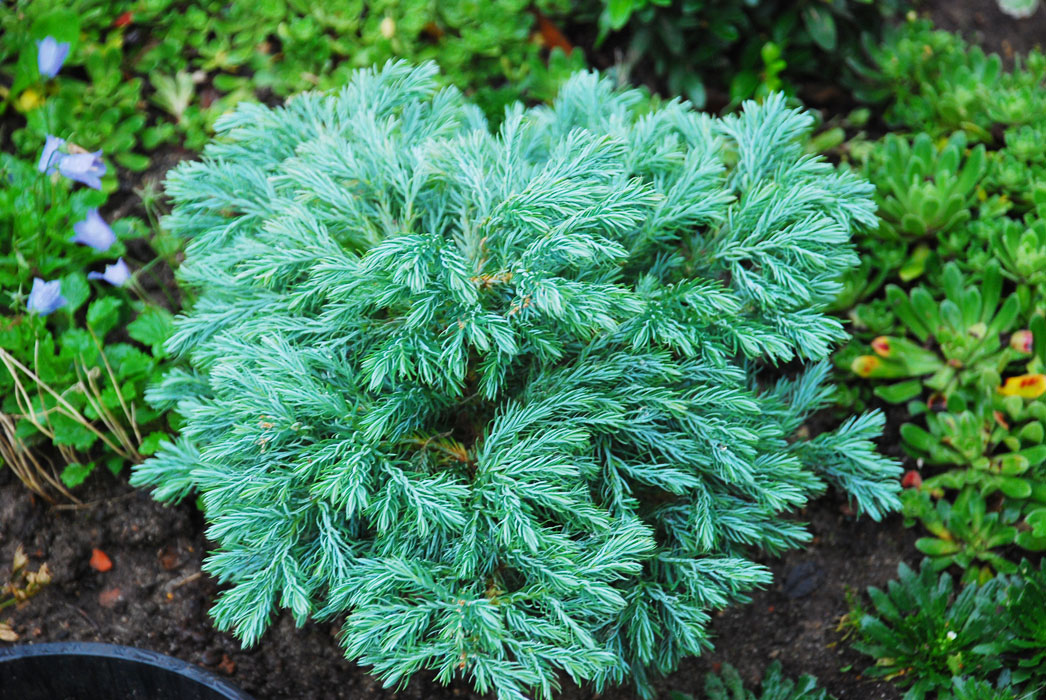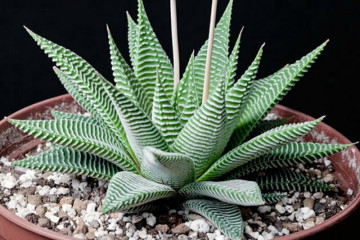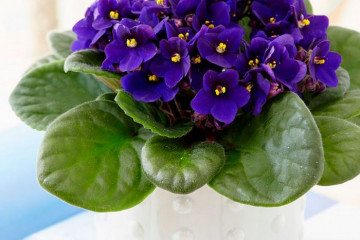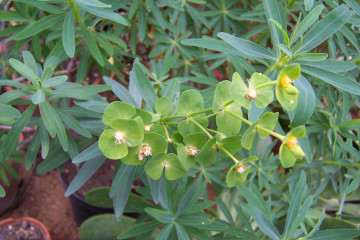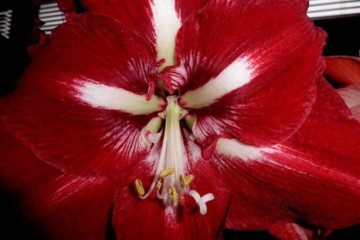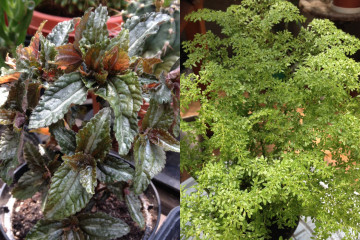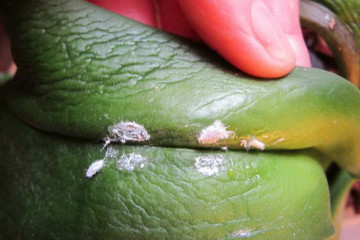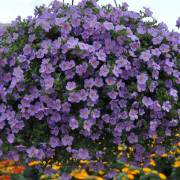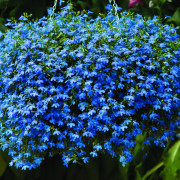Lawson's cypress Elwoody and Yvonne, Dumb Nana Gracilis and others
Content:
Just a few years ago, tree species were considered unsuitable for indoor cultivation. Gradually, opinion began to change, and many residents of summer cottages began to grow them in their homes, over time this idea migrated from private houses to apartments and offices. One of these plants is cypress.
About the history of appearance
According to the description, cypress belongs to evergreen plants. The homeland of these conifers is North America. It is in this region that the Cypress family can be found in the wild.
Plant cones are brownish and spherical. Their size is small, the diameter of the largest cone is only 1 cm. A characteristic feature of the cypress is a bloom on the cones of a gray hue. A large number of varieties of this species are known, most of which are frost-resistant.
More than 200 years ago, the cypress was introduced to Western Europe, from where it spread across the continent. During this time, new varieties were bred that easily adapt to certain conditions, even the most severe.
Cypress and cypress: what is the difference
The cypress has thin, flat needles; in the lower part or along the vein, a manifestation of a light strip can often be observed. With age, the top of the cypress tree becomes drooping.
Cypress is a tree with an oval-cone-shaped crown. His needles are light green with a golden tint. In cypress, a distinctive feature from cypress is the color of the trunk - it has a grayish tone.
Common varieties for growing in a pot
Cypress is one of the plant varieties that thrive indoors. They can be used both for landscaping balconies and for large rooms.
Cypress includes 7 species, they all grow in mountain forests, on the coast of the seas and in swampy areas. They tolerate waterlogging and cold well. These trees can reach a height of up to 25 m (pea cypress), some grow even higher than 60 m (Lawson cypress). Also, breeders have bred low-growing varieties that do not exceed 5 m, some belong to dwarf ones - up to 1 m.
Beginners in the cultivation of this plant should give preference to low varieties, for example, the BeBi Blue pea cypress. You can also take the stupid cypress Nana Gracilis for the first time. Over time, these varieties can be planted in the ground, where they will continue to develop.
Lawson's cypress
The highest representative of Cypress is precisely Lawson. Some varieties are capable of reaching a height of up to 70 m.When growing them, they try to reduce the height due to the fact that the growing point (crown) is pinched.
Popular varieties:
- Golden Wonder. Not very tall tree (only 7 m), with a conical crown. The branches of the variety are very powerful, they grow by 15 cm per year. The needles of young shoots are tightly pressed, have a golden hue. It develops poorly on poor soils, does not tolerate drafts. In landscape design, it is often used for single plantings.
- Columnaris Glauka. A tree with a pyramidal crown, capable of growing up to 10 m. It develops rapidly, shoots grow by 20 cm per year. The needles are bluish or metallic in color, with the onset of cold weather changes color to gray. A great option for landscaping a balcony or terrace.
- Elwoody. The Elwoodi cypress grows to a height of only 2 m. It attracts many with its compact crown shape, slightly drooping downwards. A highlight of the Lawson Elwoodi cypress variety is an unusual shade of needles - bluish-gray. Some inexperienced summer residents, confusing the varieties of plantings, call it the Elwoodi cypress.
- Globoza. This is another undersized variety of the Lawson species. It grows in height only 1 m. Due to the location of the branches (horizontally), it resembles a shrub with greenish-blue needles.
Dull cypress
It is also called dull-leaved. Many representatives of this species do not exceed the height mark of 2 meters. Among all varieties, the most popular for cultivation in the Moscow region are:
- Drath (Dracht) is a shrub that grows in height from 1.5 to 2 m. Annually it can grow in growth of only 5 to 10 cm. It has a compact conical crown shape. The needles have a grayish-green tint.
- Rashahib. A dwarf shrub with a spreading crown shape. The branches are not closed, so the crown looks loose. The shrub has a bright green tone, on which brownish or reddish cones are located.
- Nana Gracilis is a stunted bush. The bush is able to grow up to only 60 cm. It has a wide crown that has a conical shape. An excellent option for growing at home, because plant with beautiful dark green needles.
Pea cypress
A cypress grows up to 3.5 m in height, in width it can reach 2 m. To grow it, you need space, with a lot of light. With prolonged shading, the needles lose their natural tone.
Some varieties:
- Filifera Nana is a pea cypress that can grow up to 2 m in height.In the first 10 years, it reaches only 50 cm in height. Shoots are thin, forming a falling crown. The branches slightly resemble greenish ropes.
- Boulevard is a cypress variety, the tree of which grows only up to 2 m in height.It was bred specifically for small winter gardens, which use a mix of flowering plants and dwarf evergreen trees, including the cypress Boulevard (another version of the Russian name of the variety).
- Sangold is a small spherical shrub. It can grow up to only 50 cm. Has gained popularity in home gardening, thanks to its soft needles, which have a greenish-golden hue.
Evergreen (Cupressus sempervirens)
Evergreen cypress has scaly leaves that are located on the shoots. The arrangement is non-standard - cross-opposite. The cones on the cypress are large, with clearly visible tubercles. The needles are dark green in color and have a compact columnar shape.
Kashmiri (Cupressus Cashmeriana)
A medium-sized plant with a pyramidal crown. The plant is very demanding on growing conditions. Temperature and watering regimes must be observed. For the winter, the tree must be transferred from a balcony or loggia (especially from open ones) to a heated room.
Large-leaved (Cupressus macrocarpa)
It gained its popularity due to its unusual aroma - lemon.A striking representative of the species is the Goldcrest Vilma variety - a cypress with lime-colored needles. Despite the fact that it does not bloom and does not give cones, it is still used in landscaping residential buildings, offices and plots.
Cypress care at home
The main care of the plant is regular watering with spraying. When growing these plantings, some nuances must be taken into account.
Lighting
Cypress trees are very fond of light, so you have to take care of this. They easily tolerate short-term shading, it is better not to contact plants with direct sunlight, as this will affect the condition of the needles and the entire tree.
Temperature
In the summer period for Cypress, the optimal temperature is considered to be from 23 to 25 degrees, in the winter - from 11 to 15. If it is very hot in the room where the cypress grows, it is worth opening a window or turning on the air conditioner.
Watering
It is desirable that the earthen lump is always moist.
Spraying
The spraying procedure should be carried out more often than watering. Throughout the day, you need to walk several times with a spray bottle over the branches and needles of a cypress.
Humidity
Cypress trees do not tolerate dryness in the air. To create optimal conditions for plants, it is necessary to regularly spray water into the air. It is required to monitor the indicator of air humidity, it should not fall below the 50% mark.
Priming
The best option would be to purchase a ready-made substrate for coniferous plantings in the store. Before planting a cypress tree in a pot, you need to fluff the soil a little so that it is saturated with air. Cypress trees do not like knocked down soil. If you prepare the substrate yourself, you need to observe the proportions: turf soil (3 parts), peat (1 part), leafy soil (1 part) and sand (1 part).
Top dressing
Cypress trees always respond well to mineral and organic fertilizers. When feeding, these two types should be alternated. The ideal option would be ready-made feeding for bonsai and ornamental plantings.
During the rest period
In winter, the number of irrigations is reduced, and top dressing is not carried out. The requirement for air humidity remains. In winter, the cypress tub can be placed away from the window, it will feel fine even in the far corner of the room, rather than being near the window where the heating pipes are.
How cypress reproduces
There are three ways to propagate a cypress tree. Each of them is laborious in its own way; in order to achieve a result, it is worth trying each of them.
Germinating seeds
The most energy consuming way. The seeds must be collected, before sowing, stratification must be carried out, which lasts about 3 months. The seeds are placed in a room where high humidity and temperature are maintained (up to 7 degrees).
Rooting cuttings
Cuttings of 9-11 cm are cut, placed in a special greenhouse (where the temperature is maintained at 22-23 degrees), where wet sand is poured over the nutrient soil. Cuttings are planted at an angle and left there until the roots appear. Inspection and watering of the site are regularly carried out. After 2-3 months, the first rooted cuttings should appear.
Air layering
The shoot is being processed by Epin. After emergence in the place of processing of roots, the shoot is cut off and planted in the nursery until complete rooting. After that, the seedling can be planted in a permanent place in open ground or a pot.
Transfer
Since many representatives of Cypress develop very quickly, they must be transplanted at least once every couple of years.You need to plant plants in a spacious container, be sure to arrange drainage (pebbles or expanded clay). The preparation of the soil was mentioned above. After planting, if the mixture was prepared independently, the plants should be fed.
Possible growing problems
Due to non-observance of the rules of care, problems may arise that will oppress the plant, or even lead to its death.
The needles turn yellow and fall off
A frequent occurrence during the heating season. If the plant begins to turn yellow, it is urgently necessary to move it further from the battery, water and spray. Also, such a problem arises when direct rays hit the needles, then the cypress must be shaded or moved away from the window. The plant can turn yellow from a lack of watering or mineral nutrition. To identify a lack of soil, you should shed a lump abundantly and observe the plant for several days, not forgetting about regular watering and spraying.
The tips of the needles dry
This is a sign that the plant does not receive the required amount of moisture from the soil and air. Therefore, in order to restore it, you need to carefully remove the damage, shed the plant and sprinkle the needles of the cypress tree, especially the Nutkan one, which has weeping shoots.
Pests
Like other indoor plants, cypress is damaged by pests. A big problem for him is the scale insect and the spider mite. The first one damages the trunk, the pest can be noticed immediately. Bumps of a brownish or yellowish hue will form on the trunk and shoots. The tick damages the needles themselves. If a cobweb appeared on the branches, and the needles began to curl, this is a sign of the appearance of this pest on the plant. The most optimal thing is to process the tree with actellik.
Such nuances of caring for representatives of Cypress are available when they are kept in room conditions. Wanting to grow an interesting plant in the apartment, slightly resembling a thuose bush, you should study in detail the growing conditions for a particular variety. Despite the fact that many of them have high winter hardiness and unpretentiousness, all of them, when grown in room conditions, require special attention.
